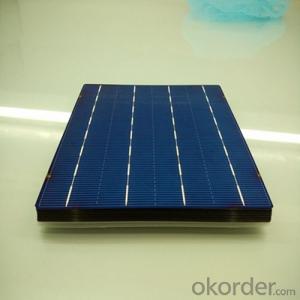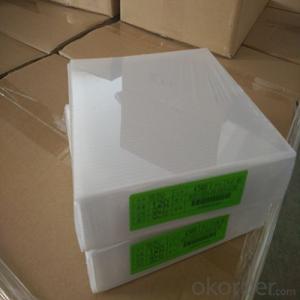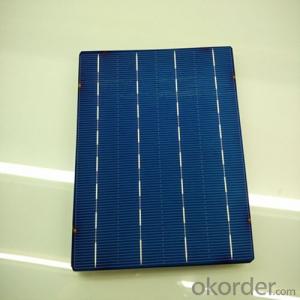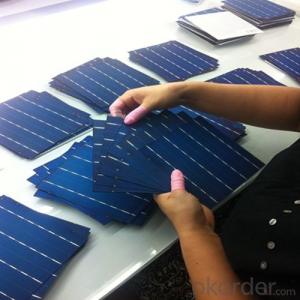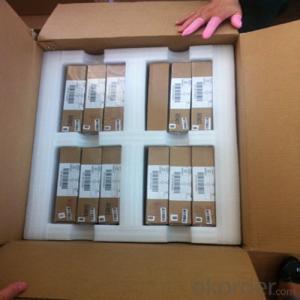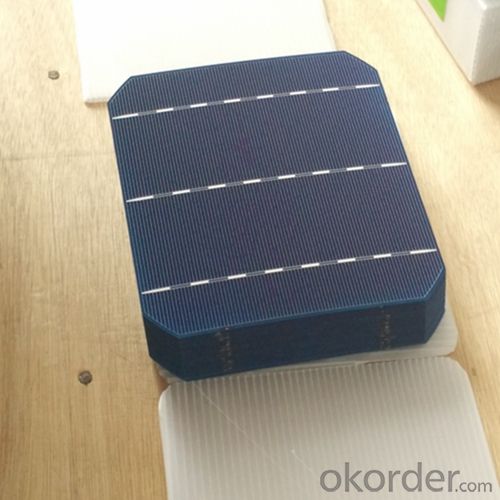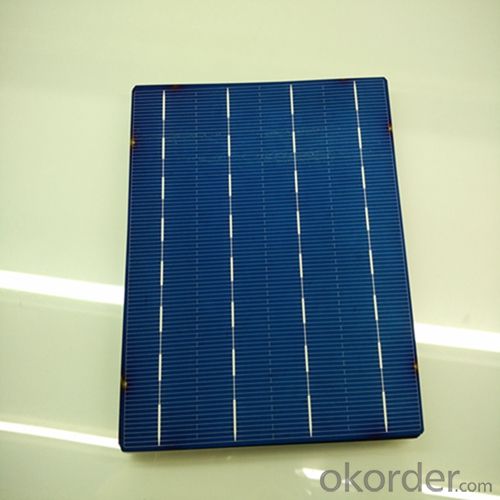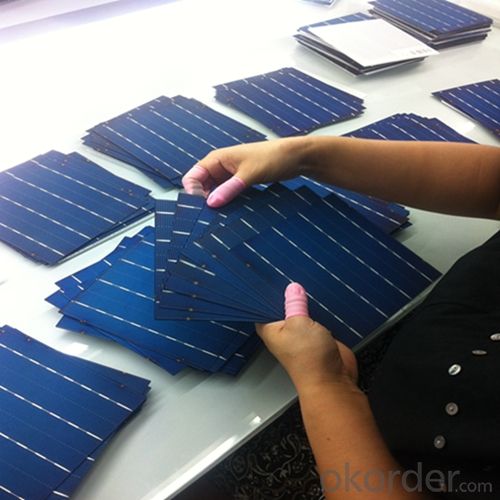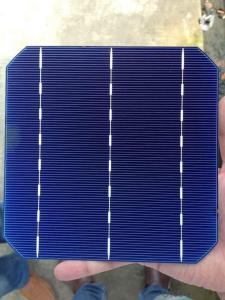Copper Indium Diselenide Solar Cells - Mono 156x156mm2 Made in Jiangsu
- Loading Port:
- Shanghai
- Payment Terms:
- TT OR LC
- Min Order Qty:
- 4999 watt
- Supply Capability:
- 650000 watt/month
OKorder Service Pledge
OKorder Financial Service
You Might Also Like
Benefits of Solar Power:
Now is a great time to go solar and harvest the power of the sun. Here is our top ten list of the benefits to installing solar power:
When installed, solar energy is free – no resources are consumed
Help to lessen our dependence on heavily polluting coal power stations
Fossil fuels can't last forever, future generations will appreciate the effort
Characteristic of Mono 156X156MM2 Solar Cells
You are gaining energy independence - add battery backup power for even greater energy security
The cost of electricity is only going to rise – insure against that rising cost
Quality solar power and water adds value and appeal to your home
Specifications of Mono 156X156MM2 Solar Cells
Solar PV systems are easily upgraded in future - aim to make your house a net energy producer!
Solar panels offer a long lifetime of low maintenance service, maybe 30-40 years
Your friends will think you're great!
You'll feel great for doing your bit for the environment!
Mechanical data and design
Format | 156mm x 156mm±0.5mm |
Thickness | 210μm±40μm |
Front(-) | 1.5mm bus bar (silver),blue anti-reflection coating (silicon nitride) |
Back (+) | 2.5mm wide soldering pads (sliver) back surface field (aluminium) |
Temperature Coefficient of Cells
Voc. Temp.coef.%/K | -0.35% |
Isc. Temp.coef .%/K | +0.024%/K |
Pm.Temp.coef. %/K | -0.47%/K |
Electrical Characteristic
Effiency(%) | Pmpp(W) | Umpp(V) | Impp(A) | Uoc(V) | Isc(A) | FF(%) |
18.35 | 4.384 | 0.526 | 8.333 | 0.63 | 8.877 | 78.39% |
18.20 | 4.349 | 0.526 | 8.263 | 0.63 | 8.789 | 78.54% |
18.05 | 4.313 | 0.525 | 8.216 | 0.63 | 8.741 | 78.32% |
17.90 | 4.277 | 0.524 | 8.161 | 0.625 | 8.713 | 78.04% |
17.75 | 4.241 | 0.523 | 8.116 | 0.625 | 8.678 | 77.70% |
17.60 | 4.206 | 0.521 | 8.073 | 0.625 | 8.657 | 77.36% |
17.45 | 4.170 | 0.519 | 8.039 | 0.625 | 8.633 | 76.92% |
17.30 | 4.134 | 0.517 | 8.004 | 0.625 | 8.622 | 76.59% |
17.15 | 4.096 | 0.516 | 7.938 | 0.625 | 8.537 | 76.80% |
17.00 | 4.062 | 0.512 | 7.933 | 0.625 | 8.531 | 76.18% |
16.75 | 4.002 | 0.511 | 7.828 | 0.625 | 8.499 | 75.34% |
16.50 | 3.940 | 0.510 | 7.731 | 0.625 | 8.484 | 74.36% |
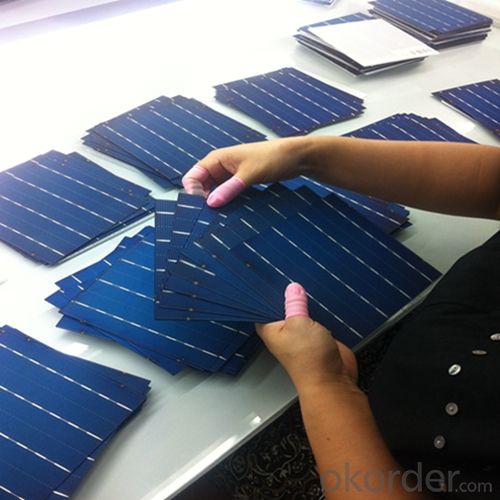

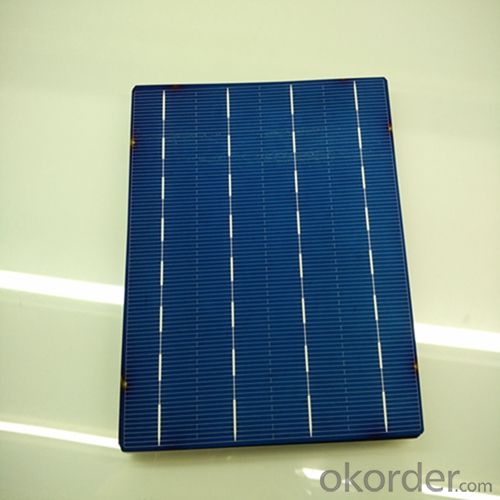
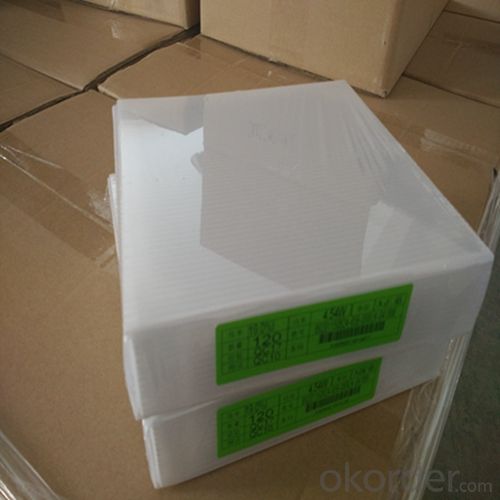

FAQ
Q: What price for each watt?
A: It depends on the quantity, delivery date and payment terms, generally Large Quantity and Low Price
Q: What is your size for each module? Can you tell me the Parameter of your module?
A: We have different series of panels in different output, both c-Si and a-Si. Please take the specification sheet for your reference.
Q: What is your size for each module? Can you tell me the Parameter of your module?
A: We have different series of panels in different output, both c-Si and a-Si. Please take the specification sheet for your reference.
- Q: What are the 3 things you need to know before you start to make solar cells?
- I think there is an easy way to follow even though the commercial solar cells use silicon as the semiconductor.
- Q: Can solar cells be used in public infrastructure projects?
- Yes, solar cells can be used in public infrastructure projects. Solar cells can be integrated into various infrastructure elements such as street lights, bus stops, parking meters, and even road surfaces to generate electricity from sunlight. This sustainable energy source can help reduce reliance on traditional power grids, lower carbon emissions, and promote renewable energy use in public spaces.
- Q: Can solar cells be used in agricultural farms?
- Yes, solar cells can be used in agricultural farms. Solar energy can be harnessed through solar panels to power various farm operations, such as irrigation systems, lighting, and equipment. This can help reduce reliance on fossil fuels, decrease energy costs, and promote sustainable practices in agriculture.
- Q: Can solar cells be used in satellite or space exploration missions?
- Yes, solar cells can be used in satellite or space exploration missions. Solar cells are an efficient and reliable source of electricity that can harness the energy from the Sun in space. They are commonly used in satellites and space probes to power various systems and instruments, as they can generate electricity even in the absence of an atmosphere. Additionally, solar cells offer a lightweight and compact solution for power generation in space, making them ideal for long-duration missions where other power sources may not be feasible.
- Q: Can solar cells be used for powering internet connectivity?
- Yes, solar cells can be used to power internet connectivity. Solar cells convert sunlight directly into electricity, which can be used to power various devices, including internet routers and modems. This allows for the provision of internet connectivity in remote or off-grid areas where traditional power sources may be limited or unreliable. Additionally, solar-powered internet connectivity can contribute to sustainability efforts by reducing reliance on fossil fuels and lowering carbon emissions.
- Q: Can solar cells be used to power remote oil and gas monitoring systems?
- Yes, solar cells can be used to power remote oil and gas monitoring systems. Solar cells are a reliable and sustainable source of renewable energy that can be used to generate electricity in remote locations where access to the grid is limited. By harnessing the power of the sun, solar cells can provide a continuous supply of electricity to power monitoring systems for oil and gas operations, ensuring efficient and reliable monitoring in remote areas. Additionally, solar power offers environmental benefits by reducing reliance on fossil fuels and minimizing carbon emissions.
- Q: Can the solar powered cells really work better than the normal cells?
- Yes, of course, the solar powered cells are much better than the normal cells, not only it functions better but also because it can save much more ebergy while proving more energy.
- Q: How to get high voltage and high current output of solar cells?
- Here is the way I tried by myself: Using 0.5 880 volt 5 ampere output of the battery board, in series 440 as the first group, and then get a second group, and then put the two groups in parallel, you can get what you want.
- Q: How are solar cells used in agricultural applications?
- Solar cells are used in agricultural applications to generate electricity for various purposes, such as powering irrigation systems, lighting in greenhouses, and running equipment like pumps and fans. They help farmers reduce their reliance on traditional energy sources and promote sustainable farming practices.
- Q: What is the expected degradation rate of a solar cell?
- The expected degradation rate of a solar cell can vary depending on various factors such as the quality of materials used, manufacturing processes, environmental conditions, and maintenance practices. However, on average, a well-designed and properly maintained solar cell can experience an annual degradation rate of around 0.5% to 1%. This means that over time, the solar cell's efficiency may decrease by 0.5% to 1% per year.
Send your message to us
Copper Indium Diselenide Solar Cells - Mono 156x156mm2 Made in Jiangsu
- Loading Port:
- Shanghai
- Payment Terms:
- TT OR LC
- Min Order Qty:
- 4999 watt
- Supply Capability:
- 650000 watt/month
OKorder Service Pledge
OKorder Financial Service
Similar products
Hot products
Hot Searches
Related keywords

